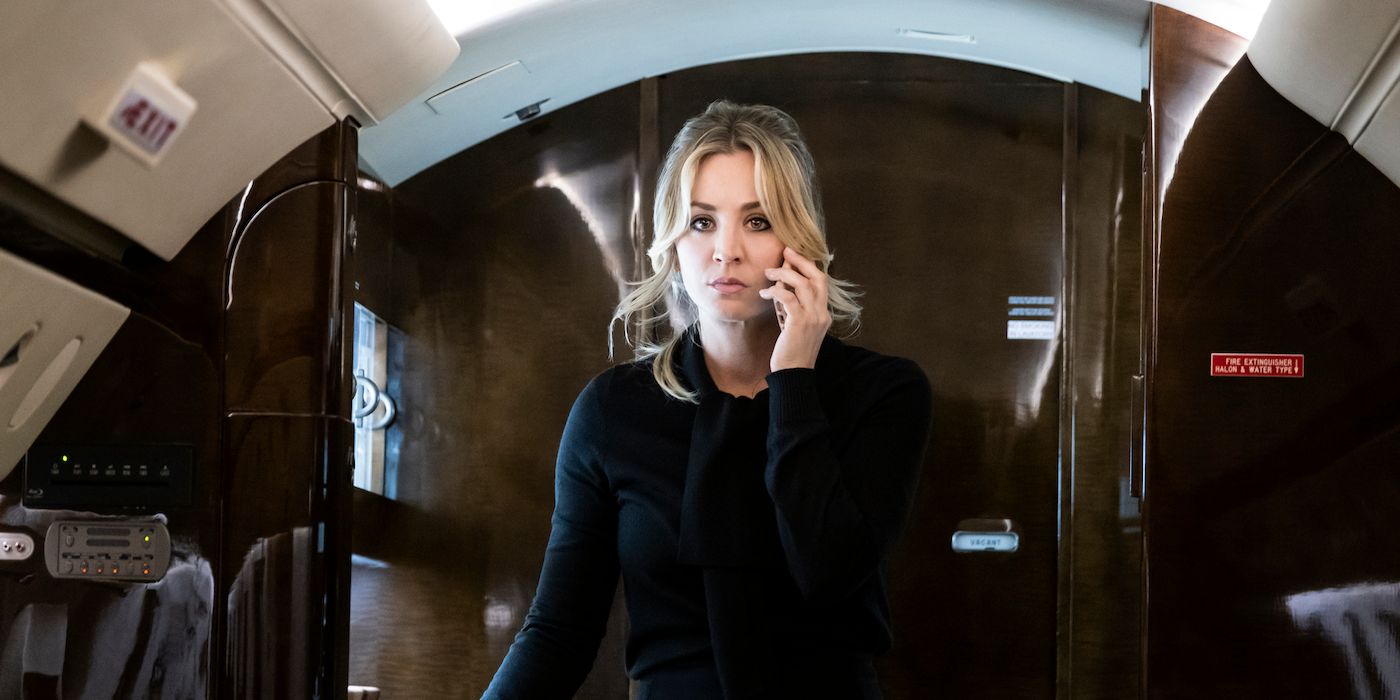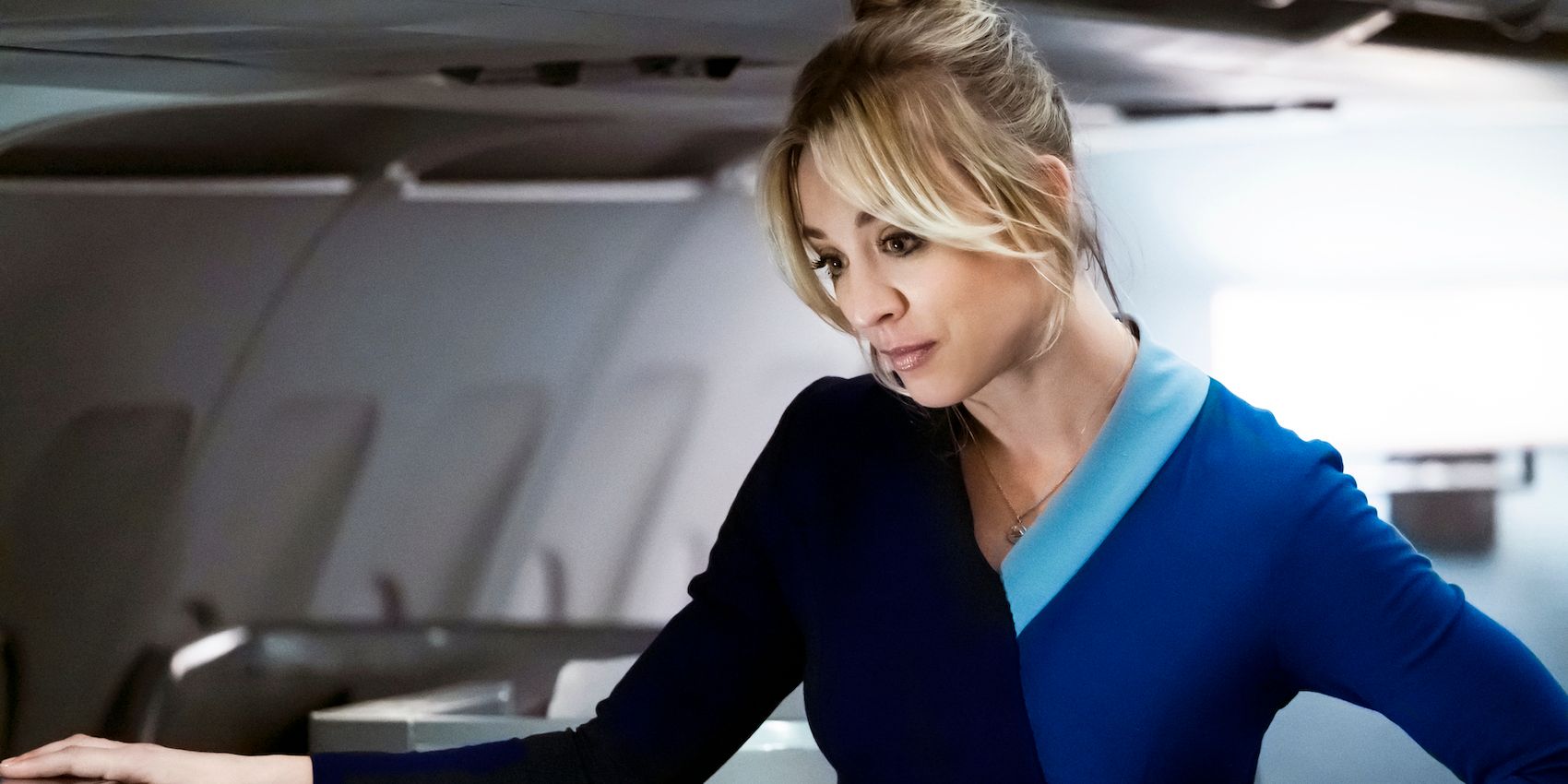Contemporary movies and TV series today are chock-full of references to the works of Alfred Hitchcock, indicating the significance of The Master of Suspense. HBO Max’s The Flight Attendant is one such example. Based on a novel by Chris Bohjalian, the show revolves around Cassie, a flight attendant who lands herself in hot waters when she wakes up next to her murdered date, the morning after their hookup.
Things get crazier when Cassie impulsively wipes down the crime scene and flees instead of reporting the accident to the police, fearing that she may have had something to do with it but can't remember due to her heavy drinking. It’s a kooky premise but one given credence through the enviable talents of leading lady Kaley Cuoco and showrunner Steve Yockey. With a strong team in front of and behind the camera, The Flight Attendant demonstrates just how timeless Hitchcock’s films and the formula are, with the first season honing in towards what worked best about his classics and updating the elements that needed adjustment.
The blondes in Hitchcock’s works were more of the sly seductive type, a more characterized version of the femme fatale in the Golden Age of Hollywood. Here though, we have a character who is part enigmatic and part your run-of-the-mill dopey lead. It’s a lot to ask for a performer to juggle, having to both play a character with hints of hidden depth whilst also playing an average person who finds themselves in a bizarre situation - which is the source of charm and intrigue in the show. Cuoco deserves a paean for how seamlessly she packages all facets of her character into her performance.
She is able to show a kaleidoscope of emotions in just a few seconds, able to sell her repeated mistakes as minor foibles, with a dexterity that makes her Emmy and Golden Globe nominations well-earned. In most of Hitchcock’s work, the Hitchcock blonde was the object of fascination for the male characters, a feminine yang to the yin. Vertigo best illustrates this, with the entire film centering on our lead’s fixation with a dead woman. The Flight Attendant uses this connective tissue to subvert our expectations of the female lead by placing her in the driver’s seat. It even goes as far as to make the object of her affection a dead man she has only known for a day, going as far as to make us think she has fallen in love with the person who she has conjured up in her Mind Palace.
On paper, Cassie equates to the kind of male leads that populated Hitchcock’s movies, complete with glimmers of darkness. However, one could also suggest that the women in Hitchcock’s films were liberated as well, from Marion Crane (Janet Leigh) in Psycho to Alicia Huberman (Ingrid Bergman), a spy tasked with taking down Nazis in Notorious. Cassie is the perfect Hitchcock lead, with all the traits that made the male and female characters in the director's seminal works so successful. In making a perfect protagonist, the series also borrowed the complexity of the main characters in the auteur’s works.
Like The Lodger, we aren’t told pertinent information about the main character until the end of the series, which alters the viewpoint of Cassie for the audience. In the show, this is with the information that Cassie survived an abusive childhood and a car crash with her father from whom she learned to pick up a drinking habit. Like Hitchcock’s Frenzy, the series sees our protagonist start out as an untrustworthy alcoholic who unknowingly sabotages every relationship in her life. Yet, unlike the gritty early 70s picture, The Flight Attendant chooses to find catharsis through comedy as a means to balance out the ugly in Cassie’s life.
This extends to the overall look and overarching feel of the show which uses pristine international locations to add to the glamour of the mystery adventure. Even the pulsing, energetic score brings to mind the works of Bernard Hermann (Marnie, Psycho). The show's penchant for globe-trotting, madcap adventures (something it plans to continue doing in Season 2) brings to mind the exotic locales of blockbusters like The Man Who Knew Too Much and To Catch A Thief, whereas the larger spy conspiracy that unfolds in the season harkens back to North by Northwest.
North by Northwest is the Hitchcock film that is most similar to The Flight Attendant. The plot also employs Hitchcock’s MacGuffin of choice: driving the story with a secret about information the audience doesn’t really care about. Alex (Michiel Huisman) has clearly been murdered for a reason, but the show doesn’t actually care about the why of it all. Even the reveal of the murderer isn’t played as some dramatic revelation other than for the few moments of initial shock. Like Hitchcock’s The 39 Steps and most of his other fare, the “secrets”' matter far less than the journey it takes to get to them.
The show’s production designer Sara K White has also confirmed that it looked to films like Rear Window for inspiration on scenes where Cassie was feeling like she was experiencing interactions almost through a window - like an out-of-body experience. Like colors and set design were employed to reveal the current mindset of James Stewart in Vertigo, The Flight Attendant uses set designs and production to function as spaces for Cassie’s psychological retrievals, permitting her to process the implication of the events she is witnessing, as well as access parts of her brain that have shielded her from trauma for years.
Like the best Hitchcock films, the story matters nearly as much as the well-being and mind frame of the protagonist. Cassie is the story and the only thing that matters even with the cacophony of larger-than-life conspiracies at play. Most importantly, like the best of his work, it keeps us at the edge of our seats, endlessly entertained throughout the ride, finding enjoyment in its leisure as much as the turbulence.




